Can you still drive on a tire with a nail in it? It’s happened to all of us in New Palestine, IN, and always at the least convenient time possible. If you can’t get to a repair shop right away, you might be tempted to drive your car with the nail still in the tire. This is a bad idea, even if the tire doesn’t seem to be flat or even leaking air—a small puncture now can lead to major damage if not cared for properly.
Depending on how deeply the tire has been punctured, the nail might prevent any air from leaking. If you must drive, make sure it’s only a short distance and go to a local repair shop. If you continue to drive on the punctured tire, it can irreparably damage it—save yourself the cost of a new tire and avoid driving on the damaged one.
Naturally, the best way to avoid a trip to the repair shop is to take precautionary measures. While you can’t account for every nail or sharp object that finds its way onto the road, you can do some simple things to reduce the possibility of running over something that will damage your tire:

If you notice that your tire is leaking air, your first priority should be finding a repair shop. Pull over and check the damage. If the hole is in the sidewall or larger than a quarter inch, you may need to put the spare tire on, or call a tow truck to take you to the shop. However, if the damage is minor, you can go ahead and drive yourself. Be cautious—your tire could blow out, which poses a risk to everyone else on the road.
If you have tire sealant on hand, you might wish to plug the hole as much as possible before driving to the shop. Again, be cautious, and resist the temptation to keep driving on the damaged tire.
For more information about keeping tires full after driving over a nail, or to get tire repair and replacement in New Palestine, IN, call Auto Air & Heating, Inc. today.
Categorised in: Tires
This post was written by Writer
It happens more frequently than you may imagine that something gets stuck in your tire. When you are driving, the rubber material around your wheels can frequently take up small pebbles, debris, or gravel, which is quite natural and will normally not do any damage.
When you are driving, the rubber material around your wheels can frequently take up small pebbles, debris, or gravel, which is quite natural and will normally not do any damage.
On the other hand, foreign things such as nails and screws can end up on the road and become lodged in your tires from time to time.
When your tires are under-inflated, more of the tire’s tread is in contact with the road, resulting in more friction as you drive. When you have too much pressure on your tires, your tires are more susceptible to damage from potholes and other road debris, which increases their risk of occurring.
If something like this has ever happened to you, you may have asked what you should do and whether it is safe to continue driving your automobile.
Ways in Which a Screw can Get into your TireThe nails and screw can enter your tire through a number of means, though many believe it is the result of sabotage. While it is possible that this is the cause, you should also consider the environment in which you are driving in order to get to the root of the problem.
Nails and screws in your tire are most frequently obtained by driving over them. One thing you’ll notice about the screw-on tire issue is that it primarily impacts the back wheels, which makes sense. The majority of the time, a screw will be lying vertically on the ground in this position. When the front wheels pass over the screw, they flip the screw over by the head, leaving it upright, and the rear wheels pass over the screw, flipping the screw over again.
As a result of their low center of gravity, which allows them to stand vertically on the road, smaller screws are very straightforward to insert into tires. Because small screws in the tire do not cause significant damage, the situation is not as serious as it could be. Due to the thickness of the tread, it is possible that the little screws will not cause significant damage.
Puddles on roadYou may also run over screws in puddles on the side of the road. Because the debris is hidden beneath the surface of the water in this situation, it is difficult to determine whether or not there is any. The water disturbance in the puddle may force the screws to elevate or point at an angle, making it easier for them to puncture the tire.
The water disturbance in the puddle may force the screws to elevate or point at an angle, making it easier for them to puncture the tire.
Screws in hardwood planks can potentially pose a threat to the tires of your vehicle. The board provides them with the necessary support to remain upright. Because of the weight of the car, the screws in the planks may enter your wheels and the wood may quickly crumble as you drive over them. With the screw exposed, it has the potential to dig even deeper into your tires.
SabotageSometimes you may discover screws in your tires, and the first thing that comes to mind is that someone is attempting to sabotage your efforts. The person who is accountable for this situation may either drive the screw in or set it in a vantage point where you will drive over it at several points throughout the day. If you have reason to believe you are at risk of sabotage, you should always check underneath and around the tires before driving away.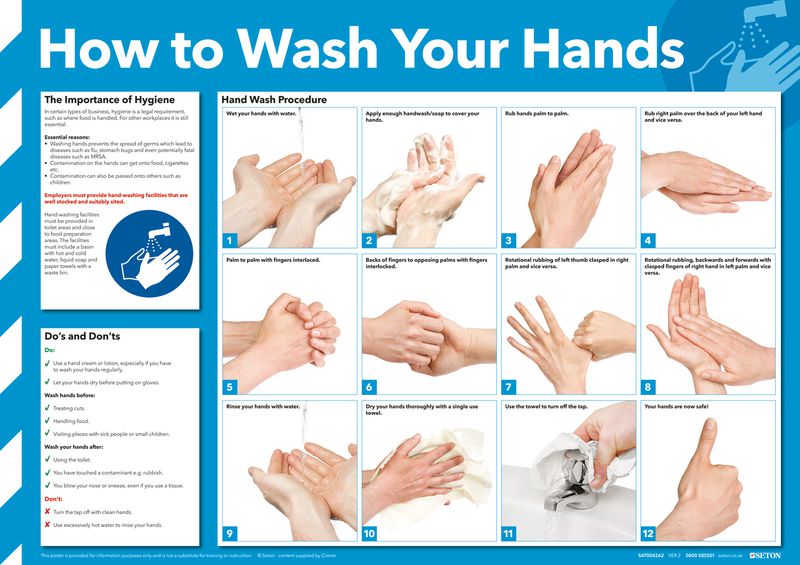 Additionally, you can sweep your feet around the wheels to verify that you are not in danger.
Additionally, you can sweep your feet around the wheels to verify that you are not in danger.
The most common anticipation is that the tire will be underinflated. The screw may act as a plug, allowing the pressure to be maintained for a short period of time. A fault with the wheels, on the other hand, can be noticed by the observer. A difficult driving experience or car instability as a result of low tire pressure on the wheels are two possible manifestations of this condition.
If you find a screw in your tire, fix it quickly before it blows outYes, you can drive with a nail in your wheel, but only if you are desperate to get to the nearest tire center or want to repair the damage.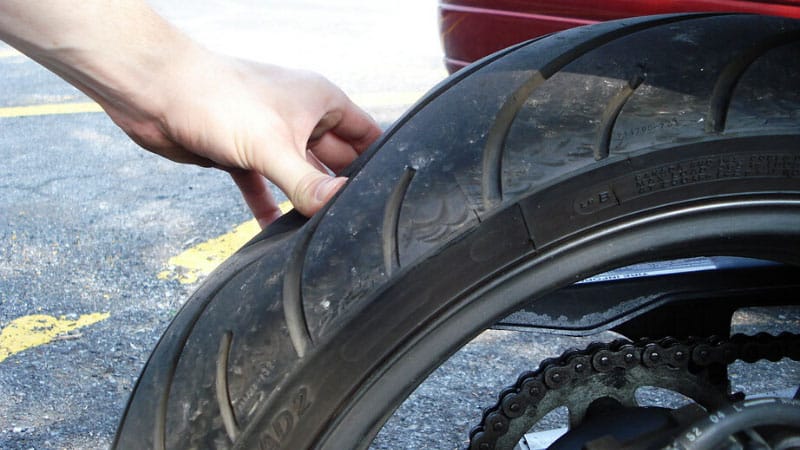 A spare tire might help you get the needed attention when you need it.
A spare tire might help you get the needed attention when you need it.
The driving experience may become rougher as the screw penetrates deeper into the tire, especially on uneven roads.
A little screw can be easily removedCheck your toolbox for the necessary tools to remove the screw. A set of pliers will do. However, you should know that removing the screw is a gamble because its length is unknown. A mechanic can remove the screw and repair the hole.
Keep in mind the damage’s locationA tire patch can fix the screw and the treads in the middle of the tire. If the screw is on the tire’s side or shoulder, replacement is the only choice. Patching a screw on the tire shoulder is not an option due to the weight of the car. The weight bulges the tires and forces the plug out. It’s disastrous if you’re driving.
In brief, a screw-in tire between treads can be repaired, but not on the sides.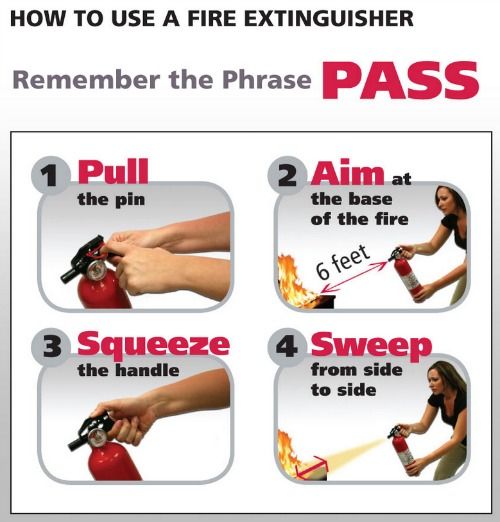
First and foremost, if you get a nail in your tire and you can literally hear or feel air leaking out, it’s time to put on your spare tire and head to the nearest tire store to have a new tire installed immediately. Whenever your tire blows out or goes flat, it’s time to get a new one installed. Remember, never drive on a flat tire since you could cause damage to your rims, which would be significantly more expensive to repair than simply purchasing a new tire. Do not attempt to push your vehicle even if it has a run-flat-tire. While these allow you to travel a short distance, it is necessary to get them repaired.
Step 1: As soon as possible, check the tire pressureHaving a nail or screw in your tire necessitates checking the tire’s pressure to make sure it isn’t losing air at an alarming rate. Until you can get the tire fixed or replaced by a professional, put the spare on if the pressure is too low.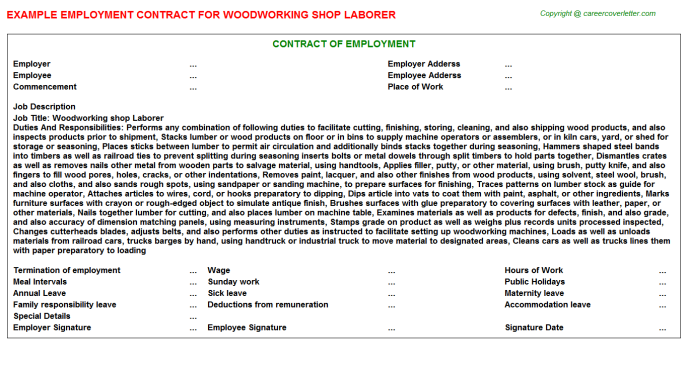 It’s possible that your tire pressure is only slightly low; if this is the case, simply pump it up and take it to a repair shop.
It’s possible that your tire pressure is only slightly low; if this is the case, simply pump it up and take it to a repair shop.
In the instance that you bring your tire into a repair shop, it will be demounted and properly checked out. It is possible that the nail will be removed and the hole will be fixed using a plug and patch combination if the puncture is to the center of the tread area. The tire repair shop will plug the hole from the outside of the tire and patch it from the interior of the tire, as needed. It will take you very little time and will not cost you an extortionate amount.
It is recommended that you hire an expert to complete this task. It is possible for snow, precipitation, and other moisture to enter the tire and corrode the steel belts if the process is not done correctly.
Step 3: If necessary, replace the tireThe entire tire must be changed in some circumstances when a plug/patch combo fails. When a hole is too large (1/4 inch in diameter) or cannot be patched, such as the sidewall or shoulder, this occurs. The tire should be replaced rather than repaired since you may damage a section of the tire, blow it out, and in the end, it could cost you more if you get into an accident.
When a hole is too large (1/4 inch in diameter) or cannot be patched, such as the sidewall or shoulder, this occurs. The tire should be replaced rather than repaired since you may damage a section of the tire, blow it out, and in the end, it could cost you more if you get into an accident.
Repairing a tire incorrectly can be hazardous to both you and other vehicles on the road, so proceed with caution. If your tire is damaged by a nail or screw, make sure to have it professionally repaired so that you can continue to enjoy your drive.
Is it Possible For a Nail to Puncture the Sidewall of a Tire?Yes, a nail can penetrate the sidewall of a tire, causing significant damage to the tire. Sidewalls are actually the weakest component of a tire, and they are particularly prone to punctures because of their design.
Radial tires are the most common type of modern tire. In other words, they have a steel band that runs the length of the tread and aids in the stabilization and strengthening of the road contact surface. Radial tires do not have a steel band in the sidewall like conventional tires. To strengthen the rubber and make it more puncture and flex resistant, they instead employ ply or nylon reinforcing fibers. That is why, it is quite easy to penetrate the tread of a radial tire, yet the vast majority of nails never make it all the way through. When they come into contact with the steel band, they do not break, but rather become stuck in the rubber tread block. Because it just produces noise and a small unbalance, this is a rather harmless phenomenon.
Sidewall punctures are significantly less common than other types of punctures, but they have the potential to be far more serious. There is nothing in the sidewall that will prevent the nail from passing through completely, and deflation is unavoidable if this happens.
It is possible that a little thing, such as a nail, could cause an uncontrollable tire breakdown under certain circumstances. The fact is that this is true, and it occurs more frequently than most people know. When a nail punctures a sidewall cleanly, it is unlikely to cause an explosion; however, a jagged or rusted nail might cause a rupture that will enlarge suddenly in extreme circumstances, resulting in an explosion.
This is more typical on old, worn-out tires than on brand new ones, although it is still possible with brand new tires as well. The nails that come from nail guns are the most dangerous. Each of these nails is held together by a little length of wire, which breaks off when the nail is pushed into the ground, resulting in jagged barb-like stubs on the shaft of each nail. This can result in uneven entrance holes, which increases the likelihood of the fabric being torn.
Tires are most prone to exploding on hot days when traveling at fast speeds. Tire pressure increases as you travel faster and as you ascend and descend in altitude. When you combine a worn-out tire with a sidewall nail, you are almost guaranteed to experience a bad highway blowout at some point.
Tire pressure increases as you travel faster and as you ascend and descend in altitude. When you combine a worn-out tire with a sidewall nail, you are almost guaranteed to experience a bad highway blowout at some point.
You shouldn’t merely pull the nail out unless you’ve deflated the tire and removed the wheel to replace it. Once the nail is removed, you’ll be able to see if there’s a hole in the bag. This can lead to an explosion if the sidewall is torn any further.
When the tire and wheel have been removed and the tire has been deflated, it is safe to remove a nail. Remove the tire from its wheel and then work on it. You’ll be able to see if the nail is deformed or needs to be cut before removing it, preventing further damage to the tire.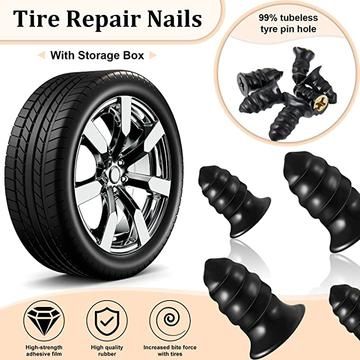
If you have this problem, inspect it. In conclusion, a nail in the tread can be repaired, but a sidewall screw requires replacement. It is temporary, so you must change the tire to enjoy a satisfying driving experience.
Photo: Mikhail Tereshchenko / TASS
adv.rbc.ru
See also
Nail, rebar or sharp stone - sometimes you can damage a tire almost from scratch. First of all, the scale of damage is important, and often rubber can still be repaired. Most often, motorists turn to tire shops for repairs in the middle of autumn or spring - just in the season of replacing summer tires with winter tires and vice versa. In order not to stand in lines, it is worth knowing exactly when to go to the tire shop and when to go to the store.
The most common "injury" to rubber is a puncture, and it can most often be repaired. Professionals in the nearest service will do it much faster, and your hands will remain clean. But if the puncture caught you in a deserted place, and there is a pump and a tire repair kit with harnesses in the trunk, you can patch up the tire yourself. Most often, when repairing the front tires, the wheel can not even be removed, it is enough to turn the steering wheel in the right direction and find the puncture site.
But if the puncture caught you in a deserted place, and there is a pump and a tire repair kit with harnesses in the trunk, you can patch up the tire yourself. Most often, when repairing the front tires, the wheel can not even be removed, it is enough to turn the steering wheel in the right direction and find the puncture site.
First, the hole is cleaned with a helical awl, the repair harness is smeared with glue and tucked into the eye of the awl, after which it is inserted into the tire hole. With a sharp movement, the tool is removed, and the tourniquet remains inside and securely clogs the hole. The tails are cut with a knife, but it is recommended to leave about 20 mm. After that, the tire can be inflated and the pressure checked.
Repair with tourniquets is not considered long-term, because after some time they dry out and begin to let air through. A more advanced puncture repair method is vulcanization. The hole is sealed with an elastic patch, and the funnel at the puncture site is filled with a special compound. A vulcanizer is put on top, which heats the patch and solders the excess.
A vulcanizer is put on top, which heats the patch and solders the excess.
Under service conditions, the puncture is also repaired with cord fungus. The puncture site is processed and drilled to roughen. Everything is smeared with glue, after which a fungus is introduced from the inside of the tire, its cap is rolled, and the excess legs are cut off from the outside.
Photo: PA Images / TASS
A puncture can also be repaired with sealant. Many car manufacturers with run flat tubeless tires put compressor repair kits in the car instead of a spare tire - a bottle of pressurized sealant. The car is raised on a jack, after which the sealant is pumped into the damaged wheel through the nipple. Next, you need to spin the wheel and pump it up. After repair, the car should be driven a couple of hundred meters to check the tightness of the tire. If it has not recovered, the procedure is repeated.
It happens that a self-tapping screw or a nail closes the hole in the tire, remaining inside. Do not rush to pull it out - until the pressure drops, you can safely get to the service for vulcanization. Sometimes the wheel begins to blow off a few weeks after the self-tapping screw got into it. Therefore, it is better to check tire pressure periodically, and if the pressure sensor lights up, you should at least visually inspect the tire for a nail head.
Do not rush to pull it out - until the pressure drops, you can safely get to the service for vulcanization. Sometimes the wheel begins to blow off a few weeks after the self-tapping screw got into it. Therefore, it is better to check tire pressure periodically, and if the pressure sensor lights up, you should at least visually inspect the tire for a nail head.
A bump or bulge most often occurs on the side of a tire after hitting an obstacle or hitting a hole at speed. From the impact, the sidewall carcass threads are damaged, the tire ceases to hold the load and pressure, swelling appears. Any small bump eventually turns into a larger one, and with such a defect, the wheel can burst at any time. This is a direct safety hazard because a sudden flat tire can cause loss of control and a road accident.
Some bulges can be repaired, but no patch will ever restore a tire to factory stiffness. The ideal option in this case is to replace the tire. If a hernia has appeared on the tread, then you can extend the life of the tire with the help of cord patches - ready-to-use patches with an adhesive layer. But if swelling is found on the sidewall, the likelihood of repair is minimal, the wheel is easier to change. Blisters on low profile tires are generally not repairable.
But if swelling is found on the sidewall, the likelihood of repair is minimal, the wheel is easier to change. Blisters on low profile tires are generally not repairable.
Only car service professionals can repair a side cut. Cord patches will be needed to repair the damage, but after some time the wheel will still have to be changed. This method will work only if the gap is not in the shoulder area of the tire, then no one will repair it.
In general, cuts or punctures, unlike punctures, are considered non-repairable, since the integrity of the frame is violated. And breakdowns do occur on the go, when the tire abruptly loses pressure and has time to make only a few turns “on the rims” before it comes to a complete stop. In this situation, the cord breaks and the layers of the tire are destroyed. Even if it is possible to close the hole, it is not recommended to use such a weakened tire.
Photo: Mikhail Pletsky / Russian Look
Cracks, sidewall abrasions and unprofessional tire fitting can also lead to tire problems. Cracks can occur as a result of improper storage of tires. Their danger is that moisture begins to flow to the cord, and this already renders the frame unusable. Air can also escape through cracks. Cracks cannot be repaired and tires will not last long. A tire with cracks is deformed, blistered, and may even break while driving.
Cracks can occur as a result of improper storage of tires. Their danger is that moisture begins to flow to the cord, and this already renders the frame unusable. Air can also escape through cracks. Cracks cannot be repaired and tires will not last long. A tire with cracks is deformed, blistered, and may even break while driving.
Rubbing against curbs or driving on uneven roadsides can damage the tire sidewall. When driving like this, it is worth inspecting the tires for damage regularly. If a slight wear is found, the wheels can be swapped, which will slightly extend their service life and allow you to delay the purchase of new ones.
Improper fitting can damage the tire bead. In this case, the tire will lose its geometry and sit on a disc with a bevel, “eights” will be visible during rotation, and the driver will feel vibration while driving. It is impossible to repair this defect, the wheel must be changed as soon as possible, otherwise there is a risk of damage to the suspension.
How to Tires
A tire is a round piece of rubber that is the main part of a car's wheel, allowing it to move. The tire also provides traction and shock absorption while driving. Over time, stones get stuck in the tires. How to remove them, we have already told you in one of the previous articles. But stones are not the only enemies of tires. There are also nails, self-tapping screws and many other sharp objects that can easily pierce a car tire. If, having caught a self-tapping screw, a flat tire, it is clear to everyone what to do. But what if the pressure continues to hold in a punctured wheel? Can I keep driving, and if so, for how long?
See also: Is it safe to drive with a screw in a tire?
So, if you happen to know that a nail (or self-tapping screw) is stuck in the wheel of your car, but the tire is still holding pressure or deflating slowly, then in no case try to pull the nail out. Leave it in the cover. Next, check the pressure in the wheel and, if it does not correspond to the one recommended by the automaker, inflate the wheel to the norm.
Leave it in the cover. Next, check the pressure in the wheel and, if it does not correspond to the one recommended by the automaker, inflate the wheel to the norm.
Otherwise, pulling out the nail that prevents the pressure from escaping from the tire will cause the tire to zero.
Of course, there is another option - to flatten the tire, pull out the nail, take a tire repair kit and repair the puncture yourself, and then re-inflate the wheel. But, unfortunately, not every motorist has such a repair kit, and not everyone will be able to repair the wheel on their own. In fact, in order to install a tourniquet into a puncture, remarkable strength is needed.
Unfortunately, a wheel puncture with a nail or a self-tapping screw happens quite often on our roads. Many punctures do not cause the tire to flatten almost instantly. As a result, many drivers notice that the wheel caught the self-tapping screw, not immediately. True, if your car is equipped with tire pressure sensors or a wheel rotation monitoring system (the system tells the driver about a sharp change in wheel rotation parameters, which usually occur when the pressure in the wheel changes sharply), then the security system will inform you of a possible problem in wheel.
True, if your car is equipped with tire pressure sensors or a wheel rotation monitoring system (the system tells the driver about a sharp change in wheel rotation parameters, which usually occur when the pressure in the wheel changes sharply), then the security system will inform you of a possible problem in wheel.
If there are tire pressure sensors, you will be able to know which wheel has changed pressure. Unfortunately, very often this system gives false warnings (for example, when there is a sudden change in road grip or a sudden change in temperature outside). As a result, over time, many drivers stop paying attention to the warning of the tire pressure monitoring system. But in vain. After all, the system can warn of a broken wheel.
To prevent this from happening, carefully inspect the wheels for punctures after each ride. If a self-tapping screw is found, contact the tire service as soon as possible.
This is another question that is often asked by car enthusiasts on various thematic forums. We want to upset car owners right away. If you have a punctured wheel, in principle, you can not ride. After all, a car is not a toy, but a vehicle of increased danger. And not only for you and your passengers, but also for other road users. Therefore, you should contact the tire service as soon as possible, even if the punctured tire does not flatten. You are not clairvoyant and cannot know at what point the wheel will instantly lose pressure. Can you imagine what will happen if this happens at speed while driving on a motorway?
We want to upset car owners right away. If you have a punctured wheel, in principle, you can not ride. After all, a car is not a toy, but a vehicle of increased danger. And not only for you and your passengers, but also for other road users. Therefore, you should contact the tire service as soon as possible, even if the punctured tire does not flatten. You are not clairvoyant and cannot know at what point the wheel will instantly lose pressure. Can you imagine what will happen if this happens at speed while driving on a motorway?
As we have already said, it is IMPOSSIBLE to drive with a flat tire. Is it dangerous. But we understand that not everyone has a spare wheel or tire repair kit in their car. Of course, if the tire is slowly losing pressure, you can continue driving by pumping up the tire first. But you don't have to drive fast. First, it's dangerous. And secondly, the faster you drive, the faster the damaged tire will bleed air.